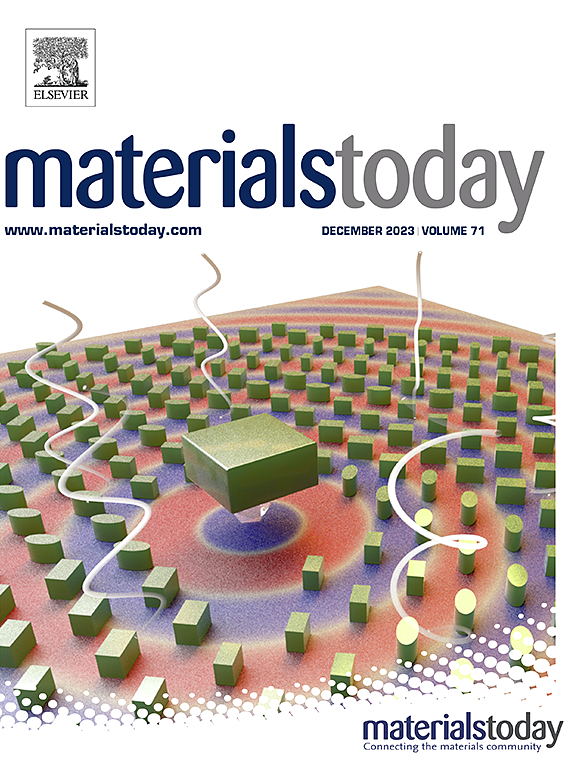Asynchronous fluorescence and structural color enabling multilevel sensing and encryption
IF 21.1
1区 材料科学
Q1 MATERIALS SCIENCE, MULTIDISCIPLINARY
引用次数: 0
Abstract
Multimode interactive displays utilizing more than two stimulus-responsive light manipulation schemes have attracted considerable attention. However, sensing displays with asynchronous light control—where two responsive optical phenomena are complementary, thereby minimizing interference between two optical modes—have seldom been demonstrated. Here we report a novel self-assembled material exhibiting asynchronous fluorescence (FL) and structural color (SC), which enables multilevel optical sensing and encryption. Asynchronous FL and SC was achieved by chemically doping aggregation-induced emission luminogens (AIEgens) into one-dimensional block copolymer (BCP) photonic crystals (PCs) comprising alternating lamellae of two dielectric components. The AIEgen-derived FL of a nonswollen BCP PC with no visible SC was deactivated when it was swollen in a solvent, consequently exhibiting fully visible SC. The complementary FL and SC manipulation through reversible molecular (aggregation vs. separation) and structural (nonswollen vs. swollen) alteration aided in developing a multimode sensing display, which could detect temperature and/or nitroaromatic gas in FL mode as well as the pH of a solution in SC mode. The AIEgen-doped BCP PC exhibiting asynchronous FL and SC assisted in constructing a novel write-once-read-many optical encryption system with multilevel security where three levels of quaternary code-type passwords were encrypted with SC, FL, and pH-matched SC.

求助全文
约1分钟内获得全文
求助全文
来源期刊

Materials Today
工程技术-材料科学:综合
CiteScore
36.30
自引率
1.20%
发文量
237
审稿时长
23 days
期刊介绍:
Materials Today is the leading journal in the Materials Today family, focusing on the latest and most impactful work in the materials science community. With a reputation for excellence in news and reviews, the journal has now expanded its coverage to include original research and aims to be at the forefront of the field.
We welcome comprehensive articles, short communications, and review articles from established leaders in the rapidly evolving fields of materials science and related disciplines. We strive to provide authors with rigorous peer review, fast publication, and maximum exposure for their work. While we only accept the most significant manuscripts, our speedy evaluation process ensures that there are no unnecessary publication delays.
 求助内容:
求助内容: 应助结果提醒方式:
应助结果提醒方式:


